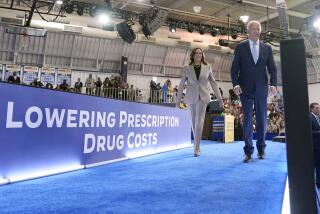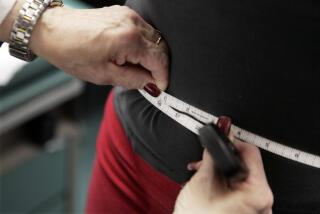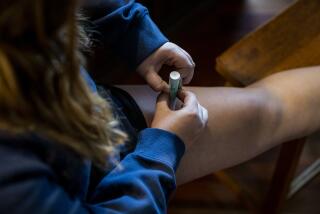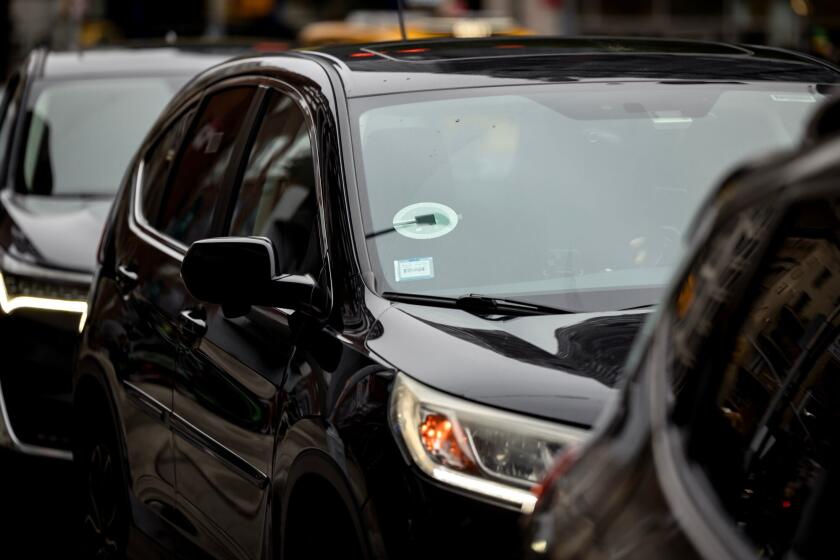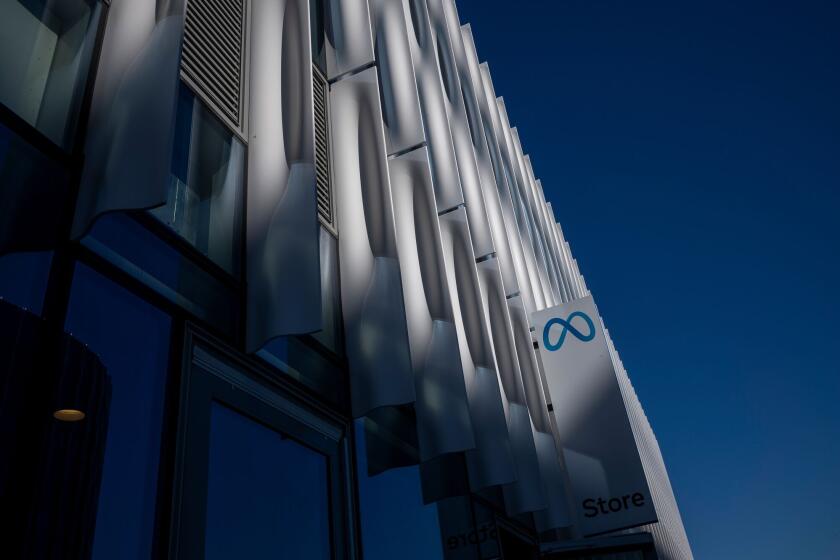Prescription drug spending jumps 13% to record $374 billion in 2014
- Share via
Driven by innovative but pricey new drugs for hepatitis C, U.S. spending on prescription drugs jumped 13% last year to a record $374 billion, according to an industry report.
The new hepatitis C drugs accounted for more than $11 billion of the spending, according to a report by IMS Institute for Healthcare Informatics, an industry research firm. Its annual report analyzes pharmaceutical sales, top-selling drugs and trends in the industry.
The influx of millions of people newly insured under the Affordable Care Act was less of a factor than expected — about $1 billion of the spending growth, it said.
“This was an outstanding year, really a once-in-a-lifetime year,” said Michael Kleinrock, director of research development for IMS Health. “It was the largest dollar growth in a single year we’ve ever measured. This is a huge amount of extra spending.”
The bulk of that was from people seeking breakthrough treatments for hepatitis C — a cure that came with a wallop at the cash register. A 12-week treatment of Gilead Sciences Inc.’s breakthrough hepatitis C drug Sovaldi could cost more than $80,000 per patient.
Gilead’s drugs Sovaldi and Harvoni drove nearly 10 times as many people to start treatment for hepatitis C last year than in 2013, the report said. Sovaldi, in its first full year on the market, became the top-selling drug in the United States, the report said.
The drugs’ eye-popping price tags have prompted criticism from government agencies and insurers, but Gilead Sciences said they were justified.
“Harvoni and Sovaldi offer a cure at a price that reduces hepatitis C treatment costs now and will deliver significant savings to the healthcare system over the long term,” Gilead Sciences spokeswoman Cara Miller said. “We believe the prices of Harvoni and Sovaldi reflect the value of the medicines.”
Also at the top of the list were Otsuka Pharmaceutical Co.’s antipsychotic drug Abilify and rheumatoid arthritis treatment Humira by AbbVie Inc.
New drugs contributed $20.3 billion to prescription spending. Multiple sclerosis spending rose 24.4% to $13.9 billion last year, driven by $4.7 billion in new brands and oral therapies.
The steep increase in U.S. prescription drug spending is unlikely to be repeated this year, Kleinrock said.
Competition has already caused Gilead Sciences to lower the prices of the hepatitis C drugs, and they are likely to slide further as more drugs hit the market, analysts said.
Last year was unusual because many hepatitis C patients had avoided treatment, waiting for the rollout of Gilead’s new drugs, said Robyn Karnauskas, a biotech analyst at Deutsche Bank. This created a massive pool of patients eager to begin treatment for the liver-damaging virus.
“The therapies were really poor before Gilead’s,” she said. “All of a sudden doctors felt comfortable treating these patients, so you saw this explosion of demand.”
The backlog of new patients is likely to diminish as sick people receive the new treatment, said Philip Nadeau, an analyst with Cowen & Co.
“We project relatively flat sales for the next few years, not really growing,” Nadeau said. “Last year was the big year, and from here on out it’s going to be relatively consistent.”
Nadeau said competition from other hepatitis C drugs will drive the pricing of Gilead Sciences’ drugs down to about $50,000 or less.
That’s one reason IMS Health’s Kleinrock said he does not expect prescription drug spending to rise as much this year as it did in 2014.
“We do think 2014 is a bit of a one-off and we will see growth come down,” he said. “But it may be too early to tell.”
Twitter: @spfeifer22
More to Read
Inside the business of entertainment
The Wide Shot brings you news, analysis and insights on everything from streaming wars to production — and what it all means for the future.
You may occasionally receive promotional content from the Los Angeles Times.
